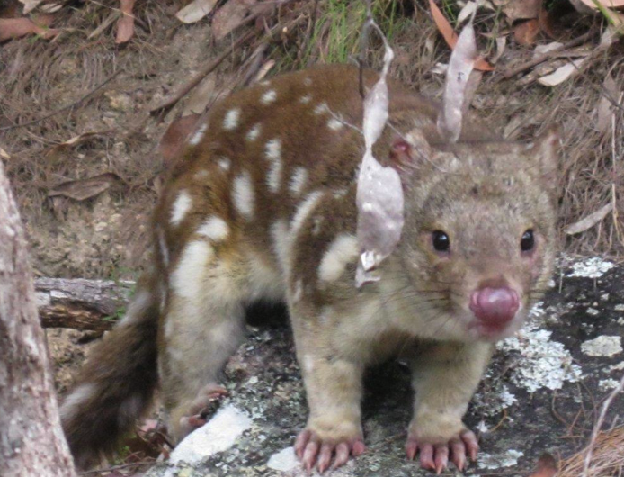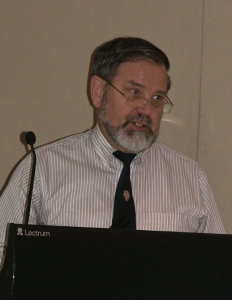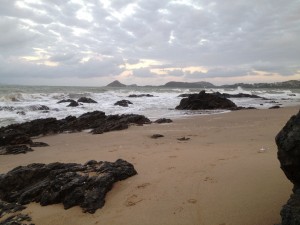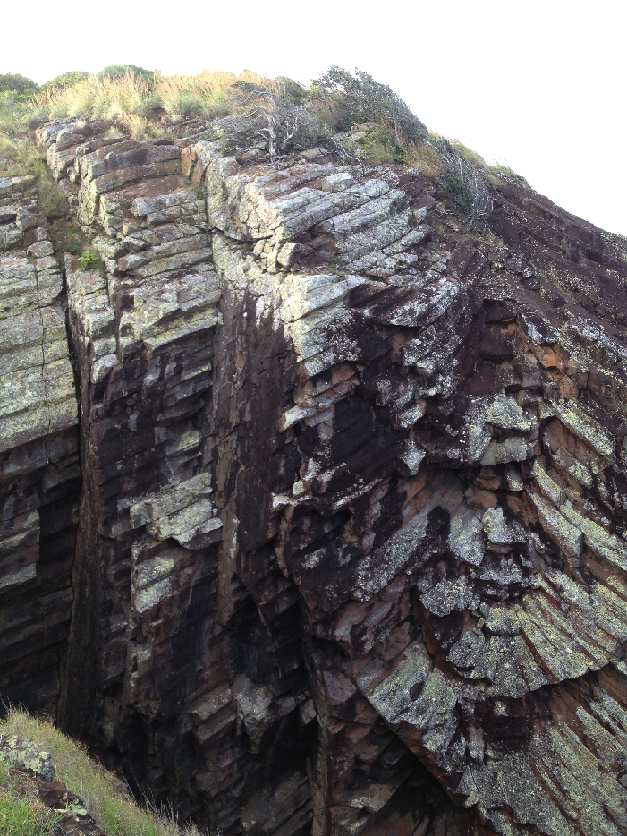ONE way to help shift an accepted scientific paradigm (e.g. Anthropogenic Global Warming) is by coming up with a more practical and relevant way of describing and predicting real physical processes in the natural world (e.g. a better seasonal rainfall forecast).
Using Artificial Intelligence to Forecast Rainfall
OVER the last year, John Abbot and I have worked on a new method for forecasting rainfall based on the use of artificial intelligence.
We have benchmarked our forecasts against output from the Australian Bureau of Meteorology’s General Circulation Model (POAMA 1.5). Our model gives a more accurate forecast for 16 of the 17 sites in Queensland that have the highest quality rainfall data. Our methodology is detailed in a new paper that will soon be published in the international journal Advances in Atmospheric Sciences.[1]
Artificial neural networks can find existing complex relationships and patterns repeated in rainfall data. The neural network software that we run on our standard laptop computer, can perform millions of calculations very quickly, and in this way find natural patterns that repeat themselves.
In contrast, the Bureau uses general circulation models; the same models used to predict global warming. These models attempt to forecast seasonal and monthly rainfall by working from a particular theory of climate. Our system is radically different in that we let the model find the patterns. We let the model find the natural cycles and then forecast forward up to 9 months.
That our system works, proves that there are patterns – natural recurrent cycles – in historical rainfall data.
Contrary to some of the claims of some climate sceptics: the natural hydrological cycle is not totally chaotic.
Contrary to the claims of most warmists: these natural rainfall cycles have not been perturbed by the current elevated levels of carbon dioxide.
What we did is tune one of the most advanced off-the-shelf software packages for pattern recognition (Synapse, Peltarion) into the natural patterns and recurrent cycles in historic rainfall data.
We found a combination of historic rainfall and temperature data combined with historic data for three climate indices (Southern Oscillation Index, Pacific Decadal Oscillation and Nino 3.4) gave the most accurate forecasts. Inclusion of solar irradiance and sunspot number did not enhance the performance of our model. Inputting carbon dioxide concentrations doesn’t improve our model.
We believe we have barely scratched the surface in terms of potential for rainfall forecasting using this method for eastern Australia and are looking for significant additional funding to progress this work.
The work has so far been wholly funded by the B. Macfie Family Foundation and supported by the Centre for Plant and Water Science at Central Queensland University.
*****
[1] Email me at jennifermarohasy at jennifermarohasy.com if you would like an advance copy of our paper:
John Abbot and Jennifer Marohasy
Application of Artificial Neural Networks to Rainfall Forecasting in Queensland, Australia
Advances in Atmospheric Sciences, Volume 29, Number 4, Pages 717-730.
[Read more…] about Using Artificial Intelligence to Forecast Rainfall
One Big Quoll
Jen,
Have a look at the size of this male quoll we saw in Boonoo Boonoo National Park near Stanthorpe a few days ago.
It is currently mating season for quolls and he was quite aggressive as well as curious.

They are rare in southeastern Queensland these days. As you would know, these Dasyurus maculatus go by the common names of Spotted Tail Quoll, Tiger Quoll and Tiger Cat. Their habitat runs from southeastern Queensland to Tasmania with another sub-species up north.
An old bloke who lived in the New England ranges as a kid once told me that these male quolls would bale him up on his way to and from school and he was terrified of them.
When I saw this quoll, I initially thought it was a feral cat running behind a tree. But the feral morphed into this magnificent native cat when he appeared the other side.
A truly magic moment: Fair took my breath away.
Jim
More Nonsense in National News about Murray Darling
THIS morning our national newspaper, The Australian, has a very misleading story about a farmer Colin Grundy complaining that Murray river water is too salty for irrigation. [1]
In fact Mr Grundy does not live anywhere near the Murray river. He lives right beside the sea.
Mr Grundy lives on Mundoo Island that faces the Murray’s sea mouth that is a narrow outlet to the pounding surf of Encounter Bay and the Southern Ocean.
Reporting on water quality in the Murray River with reference to Mundoo Island is like reporting on water quality in the Parramatta River from Circular Quay in Sydney Harbour, or water quality in the Brisbane River from Fisherman’s Island at the mouth of the Brisbane River.
There is a sea dyke across the Mundoo channel to hold back the tides of the Southern Ocean but last autumn the Southern Ocean did splash over the top of it.
Upstream, in the Murray River proper, salinity levels are at historic lows. [2]
[Read more…] about More Nonsense in National News about Murray Darling
Know Your Environments?
Guess where I took this photograph… and what the rock formation shows?
Deal with Climate Reality as it Unfolds: Bob Carter
“OVER the last 18 months, policymakers in Canada, the U.S. and Japan have quietly abandoned the illusory goal of preventing global warming by reducing carbon dioxide emissions. Instead, an alternative view has emerged regarding the most cost-effective way in which to deal with the undoubted hazards of climate change. 
“This view points toward setting a policy of preparation for, and adaptation to, climatic events and change as they occur, which is distinctly different from the former emphasis given by most Western parliaments to the mitigation of global warming by curbing carbon dioxide emissions.”
So begins an article by Bob Carter recently published in Canada’s Financial Post. The article is a summary of a public lecture Professor Carter will be giving in Ottowa, Toronto and Calgary over the next week. It continues…
“Ultimately, the rationale for choosing between policies of mitigation or adaptation must lie with an analysis of the underlying scientific evidence about climate change. Yet the vigorous public debate over possibly dangerous human-caused global warming is bedevilled by two things.
[Read more…] about Deal with Climate Reality as it Unfolds: Bob Carter




 Jennifer Marohasy BSc PhD has worked in industry and government. She is currently researching a novel technique for long-range weather forecasting funded by the B. Macfie Family Foundation.
Jennifer Marohasy BSc PhD has worked in industry and government. She is currently researching a novel technique for long-range weather forecasting funded by the B. Macfie Family Foundation.